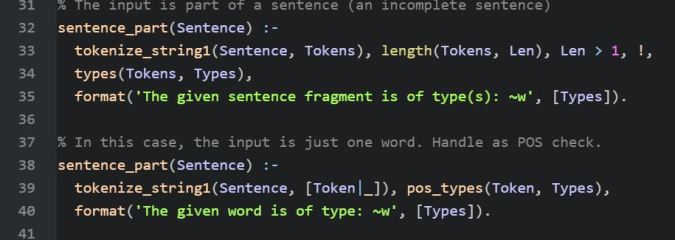Programming

In traditional Lisp (Common Lisp), when evaluating an S-expression list, the first element in the “functor” position must be a function or valid operator. newLisp relaxes this requirement and allows the first element to be a context symbol type, a list, an array, or an integer. For today’s discussion, let us ignore the context symbol, but […]

newLisp is a general-purpose scripting language with a Lisp-like syntax. That is one of the reasons I wanted to take a closer look at the language. It has a compact footprint, small resource requirements, and can easily be embedded. It is available on multiple platforms, and on my Windows machine, the installation has just two […]

In an earlier article, I showed how Sicstus Prolog allows us to use Berkeley DB for storage and retrieval of terms using the file system. Interestingly, the latest release of Sicstus Prolog, version 4.7.0, deprecates the Berekely DB library, while recommending an alternative implementation based on Lightning Memory-Mapped Database Manager (LMDB). The library interfaces are […]

Concepts, introduced in C++20, are predicates that act as contraints on template parameters. As you would expect, the nice thing is that the constraint checking happens as part of template instantiation at compile time and not at run time! Since templates can have type as well as non-type parameters, Concepts can be applied to both […]

We have been exploring the Ring Programming Language in the last two articles. Ring is a dynamic programming language with many interesting features. In today’s article, let us try to understand how this dynamic behavior is reflected in Classes and Objects. In Ring, we can define classes at runtime. One way to do this is to execute […]

The Ring Programming Language, designed by Mahmoud Fayed, has been around since 2016. I came to know of it quite accidentally two weeks ago when I received a promotional email from Apress about their book “Beginning Ring Programming” by Mansour Ayouni, published in 2020. I immediately did a google search about the language and finding […]

In the last article, I talked about determining sentence types automatically. Another interesting task is to generate the “negation” of a given sentence. Example-1: Sentence => “My teacher lives nearby” Negation => “My teacher does not live nearby” Example-2: Sentence => “She did not like that speech” Negation => “She liked that speech” I have […]

Sentences in English can be classified into the following common types: – Simple sentence (“I am drinking coffee”) – Compound sentence (“He came home with his school friend and they had an enjoyable evening”) – Complex sentence (“Whenever my dog barks, I give him some biscuit”) – Imperative sentence (“Please keep quiet”) – Interrogative sentence […]

Snake and Ladder is a popular game that originated in India and later spread to other parts of the world. Even now it is a hit among kids in South India, where people use the traditional game board, coins and dice. Last week, I had a chance to play this game with my 5-year-old granddaughter, who […]

Recent Comments